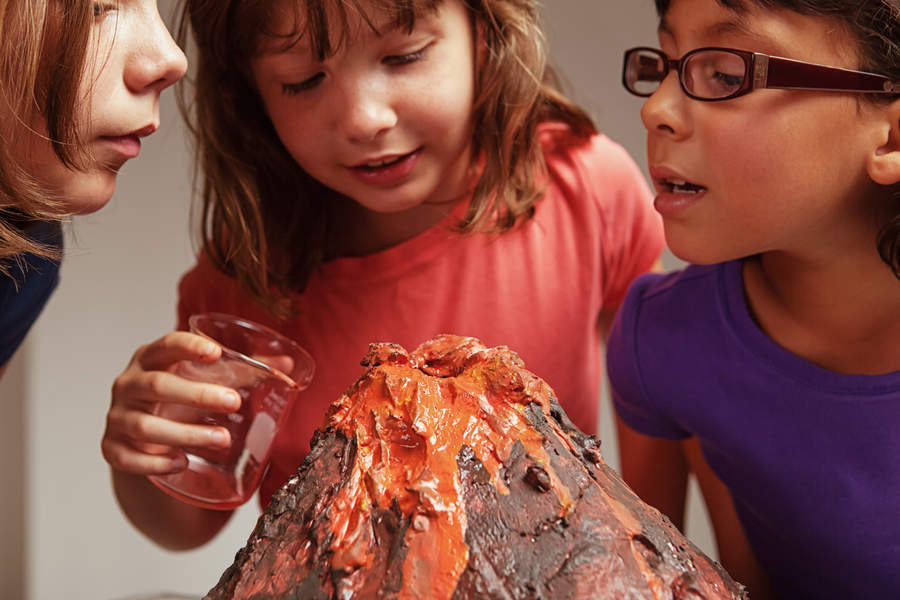The Benefits of Early STEM Education
The benefits of early STEM education come from fostering young children’s natural curiosity and love for exploration.

Providing an early STEM education for a child can help establish a lifelong connection between the student and scientific understanding and exploration that is at the heart of STEM, say advocates and a growing body of research.
Young children are innately curious and eager to explore the world. Helping facilitate that enthusiasm can fuel an ongoing interest in key STEM concepts.
Early STEM Education: What the Research Says
The Center for Childhood Creativity writes, “Even before a child’s first birthday, she is capable of making inferences, drawing conclusions about cause and effect, and reasoning about the probability of events.”
A 2016 study that followed 7,750 children from kindergarten through eighth grade found that the earlier children learned about the world, the more successful they were at science. On the other hand, students with minimal early general knowledge struggled with science subjects by the third grade and were still struggling by the eighth grade.
In a 2014 study, researchers found that preschool mathematics ability predicts mathematics achievement through age 15, even after accounting for early reading, cognitive skills, and family and child characteristics. Perhaps more significantly, growth in mathematical ability between children that were 54 months old and first grade was found to be an even stronger predictor of adolescent mathematics achievement. Together these results highlight the importance of pre-kindergarten mathematics and early math learning.
More recently, at ISTE in 2022, a researcher at Eastern Connecticut State University presented the results from a pilot study that showed children aged 4-6 saw statistically significant increases in their math abilities after participating in four coding sessions with a robot toy designed to teach coding.
Emphasis on Play and Collaboration Between Parents and Schools
The Joan Ganz Cooney Center at Sesame Workshop New America produced STEM Starts Early: Grounding Science, Technology, Engineering, and Math Education in Early Childhood in 2017. The report noted that while educators and parents are enthusiastic and capable of supporting early STEM learning, many from both groups experience “anxiety, low self-confidence, and gendered assumptions about STEM topics, which can transfer to their children and students.”
Tech & Learning Newsletter
Tools and ideas to transform education. Sign up below.
The report authors advise that, “Both groups can benefit from reconsidering STEM in the context of developmentally-informed, playful learning—like block play, gardening, and exploring puzzles—which engages their own and their children’s curiosity and wonder.”
Connecting this sense of wonder, play, and fun, with STEM early on can stay with children throughout their academic careers and lives. “We know from research that a lot of times by middle school, students have already developed stereotypes about what is for them, or what they might be good at,” says Sean Roberts, Vice President of Government Affairs for the nonprofit Code.org, which advocates for more computer science education in schools. “It's not an easy thing to overcome those stereotypes or ingrained attitudes.”
When it comes to computer science, Roberts says the key is heading off a stereotype before it forms. “Ensure that there are plenty of opportunities to expose students to the subject matter with a variety of applications that reflect where they're at, and their interests,” he says.
Another common misconception is that STEM learning for children needs to involve screens. This isn’t true, not even for computer science. “You don't have to be on a computer every day to learn the tenets of computer science,” Roberts says. “A lot of what is taught in computer science overlaps with things we've already been teaching in schools, like sequential thinking, following directions. Those kinds of things are common throughout subject areas and computer science just applies them in a different way.”
Erik Ofgang is a Tech & Learning contributor. A journalist, author and educator, his work has appeared in The New York Times, the Washington Post, the Smithsonian, The Atlantic, and Associated Press. He currently teaches at Western Connecticut State University’s MFA program. While a staff writer at Connecticut Magazine he won a Society of Professional Journalism Award for his education reporting. He is interested in how humans learn and how technology can make that more effective.

